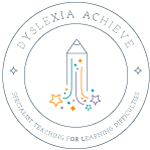This section contains information explaining what each specific learning difficulty is and its most common characteristics. A checklist will provide you with guidance on what to look out for in your children. Choose which SPLDS you’re interested in learning about below.
SPLDS Explained
Dyslexia
Dyslexia is a learning difficulty that primarily affects the skills involved in accurate and fluent word reading and spelling.
A good indication of the severity and persistence of dyslexia difficulties can be gained by examining how the individual responds or has responded to well-founded intervention.
Dyspraxia
Dyspraxia is a condition which affects the co-ordination and development of a child. It can cause a wide range of problems from clumsiness to holding a pencil.
ADHD
ADHD is a mental health condition that can cause above normal levels of hyperactive and impulsive behaviours.
Dyscalculia
Dyscalculia is a specific and persistent difficulty in understanding numbers which can lead to a diverse range of difficulties with mathematics. It will be unexpected in relation to age, level of education and experience and occurs across all ages and abilities.
Dysgraphia
Dysgraphia is a deficiency in the ability to write primarily handwriting, but also coherently. It is a writing disorder associated with impaired handwriting coding and finger sequence movement. That is the muscles required to write.

